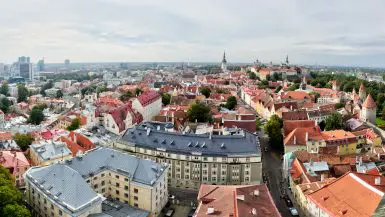Before the 2020 pandemic, the trend toward remote work was already on the rise. “Digital nomad” has been a concept in the English lexicon since 1997, and it has comparable word phrases in various languages. However, today, it has never been easier to pack up your things and work from the comfort of the globe.
This post will go over some essential information for digital nomads who want to work remotely while traveling the US. Though this post is intended for foreigners looking for work in the US, readers will find helpful tips for remote work and traveling whether they are US citizens or not.
Why Remote Work is Attractive to Both Employers and Employees
Before we dig into those tips, let’s look at why remote work is becoming more attractive to employers and employees.
Employers and Employees Are No Longer Tied to the Land
One of the benefits of our modern age is that you don’t need to be tied to the land to secure an income. Remote work has exploded as a result of the 2020 pandemic, and it is a work trend that doesn’t appear to be retreating any time soon.
When a company transitions some jobs from in-person to remote, they exponentially increase the talent pool size that they can hire from. This means a graphic design company from Chicago is no longer bound by the geographic limits of the Chicago area to hire new and rising talent.
Geographic location is no longer a prerequisite for landing your dream job. So, that means that you can now live anywhere on the globe and still work for that graphic design company in Chicago. Our world is much smaller.
This opens up so many doors of opportunity for able and qualified workers in developing nations to secure employment and gain upward mobility in ways not previously available to them. Because the talent pool has just increased manifold, that means the standards of excellence will also increase.
Office Space is Expensive to Rent and Maintain
The pandemic also proved to both employees and employers that maintaining a localized space for workers to complete their tasks is not cost-effective and not necessary for productivity. Depending on the location of a business’s headquarters, office-oriented companies in major cities are paying a premium for their office space.
According to Statista, the average cost per square foot of office space in Manhattan during 2020 was $81.40. When the lockdowns were in place, the majority of this office space was a wasted expense. In a very practical sense, the pandemic was a litmus test for what work could be completed remotely while maintaining a high standard of productivity.
Some Practical Limitations
There are still some practical limitations that restrict some jobs to operate at least in the same general timezone (give or take a few) as company headquarters. Time-sensitive jobs that require various parties working together on separate aspects of the same project need to have their employees temporally aligned to some degree.
So, depending on the job you are searching for, it may be useful to be in the same country as your job headquarters.
It Has Never Been Easier to Transition to a Nomadic Lifestyle
Whether you are a US resident or an eager worker looking for employment in the US, the stars seem to be aligned to allow for employees to have a greater sense of freedom in where they reside.
So far in this post, we have gone over why remote work is becoming more attractive for employees and employers. Now it’s time for some tips to help aid you in making the switch!
For Non-Residents Seeking Visas
Though it is more difficult for non-US residents to secure employment in the US, they have a few options that will allow them to work and travel in the US. Based on your industry, experience, and skillset, there are different visas available to you.
Relevant Work Visas in the US
- H Visas
H visas are standard work visas and are broken into three categories: H-1, H-2, and H-3. There are subsets within each of these categories. If you have received a job offer in the US and have a college degree or equivalent, you are eligible for a three-year H-2B visa.
- I Visas
I visas are for foreign media and press that have a presence in the US. Employees of these foreign media outlets can apply for I visas and live and work indefinitely in the US.
- O Visas
O visas are for non-residents who possess extraordinary talent in their particular field. Usually, these visas are applied to exceptional individuals who have received notoriety in business, science, sports, or the arts and who have been invited to perform, teach or conduct research in the US.
These three visas are the most relevant for non-residents seeking an employment situation in the US, giving them the freedom to travel as digital nomads. Whether you are an artist, a scientist, a reporter or other member of the press, or a business professional, there are opportunities for you to secure employment in the US and work remotely as a digital nomad.
If this option seems appealing to you, then you should contact an immigration lawyer who can help you successfully secure a work visa in the US. You might qualify for a better visa than you first thought.
Here is a quick scenario:
Let’s say you applied for a graphic design position at a premier graphic design firm in New York City. You land the job, but now you need to acquire a work visa. Which visa should you apply for? This is where legal advice comes in handy.
An O-1 visa lawyer in NYC can help you successfully land an O-1 visa to work for that NYC-based graphic design firm if you have been recognized for your talents in graphic design in your home country. This might be a better visa based on your situation and needs. Seeking legal advice could be the difference between acquiring your visa or being denied.
You Can Become a Digital Nomad
You now have the knowledge you need to find employment in the US and become a digital nomad. There are many companies across various industries who are looking for qualified and eager workers from abroad — and you may even be able to take your office with you as you work!







Leave a reply